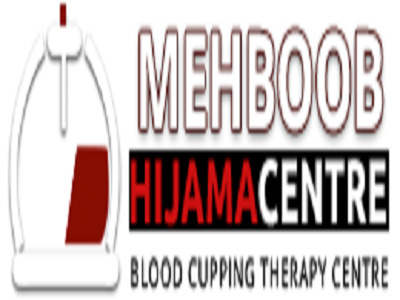Don't wanna be here? Send us removal request.
Photo

Physical Therapy Clinic in Rawalpindi Welcome To Mehboob Hijama Centre
Mehboob Hijama Centre is a health centre, the first of its kind in Islamabad, Pakistan.
Here, Islamic tradition as well as technology are combined to offer the best health services according to the Quran, Prophetic and modern medicine.
Our state of the art health facility offers Hijama,Our team of qualified staff is led by Hakeem Adil who has qualified from National Council for Tibb(NTC). He has been practicing Hijama for more than 9 years.
Additionally, we have qualified female Hijama Specialist who perform hijama for females.
HIJAMA
Over centuries, cupping, also known as hijama in Arabic has been a means of treatment and preventing acute and long-term health conditions, the word Hijama in Arabic comes from the root al-hajm, which means “sucking”. It is a simple, safe and painless procedure of applying cups to specific meridian points on the body to help release toxins. Cupping is also considered to be the fastest way to detoxify. It increases blood circulation, boosts the immune system, regulates the hormones and helps the body find its own natural balance.
Cupping therapy helps and improves a range of issues
By increasing blood circulation to the area in which the cups are applied, muscle tension may be relieved. The individual may experience a feeling of relaxation similar to a deep tissue massage. In turn, overall blood flow is improved and cell repair is promoted. This process causes your blood vessels to expand, encouraging blood flow and increased circulation to the damaged area(s).
Cupping helps with : Arthritis, Fibromyalgia, High Blood Pressure, Migraines, Anxiety, Depression, Allergies, Asthma, Varicose Veins and much more..
The History of Hijama
Cupping is an ancient method of causing local congestion, where a vacuum is created with the use of vessels, which are placed on the skin either by means of heat or suction, which then draws up the underlying tissues. When the cups are left in place on the skin for a few minutes, blood stasis is formed and localised healing takes place.
Cupping is considered with others to be the oldest natural healing therapies. History tells us about Archaeologists who found evidence of cupping therapy being practised from as early as 3000 B.C. The earliest record of cupping is around 1550 B.C. by the Egyptians .This document was called the Ebers Papyrus; one of the oldest medical textbooks in the world
Anthropologists also found evidence in China of cupping dating as far back as 1,000 B.C. The history of Chinese cupping is a long history of healing and innovation. It was an ancient Taoist medical practice and was widely used in the courts of Imperial China. Its administration was first documented by Ge Hong, in an ancient article called Handbook of Prescriptions for Emergencies.
This ancient method has been proven effective against common disorders associated with the pulmonary system. The Chinese expanded the use of the cupping technique to surgery, this was called wet cupping. Other ancient cultures including the Egyptians and early Greeks had all embraced the therapeutic value of cupping. Hippocrates (c. 400 B.C.) used cupping for internal disease and structural problems. Hippocrates was known as the Father of Modern Medicine, during this golden era of the early Greek state, Hippocrates and his followers were devoted to an empiric approach to healing and sought naturalistic explanations of why people became ill. The Cupping technique soon spread through the medicine world, throughout Asian and European civilisations. Each country having their own name for cupping therapy and having their own methods of cupping. Physical Therapy Clinic in Rawalpindi
Here are some of the names that cupping is referred to in other cultures; Hijamah / Baguanfa / Jiaofa / Bentusa / Vendouse / Gac Hoi / Bahnkes/ Kyukaku / Ventosaterapia / Schr–pftherapie / Kupa Cekme / Bankovani / Ventouzzes and Vacuume Terapi.
The two main methods of cupping practised wildly throughout history and also documented in the Ebers Papyrus, and Hippocrates were, Bleeding (or wet) cupping and Dry cupping. Dry cupping – This procedure involves creating a vacuum into the cup bringing blood and lymph to a specific area, promoting circulation and healing, In addition it will help break adhesions between the skin and underlying connective tissues, allowing for freer movement, pulling the local underlying tissue up into the cupping vessel. Wet cupping – This is the oldest and the most effective method. A surgical tool called a lancet is used to scrape the skin, the vessel is then placed over the manipulated area, and with the suction pulling the blood, which is then drawn up into the glass cup.
1 note
·
View note